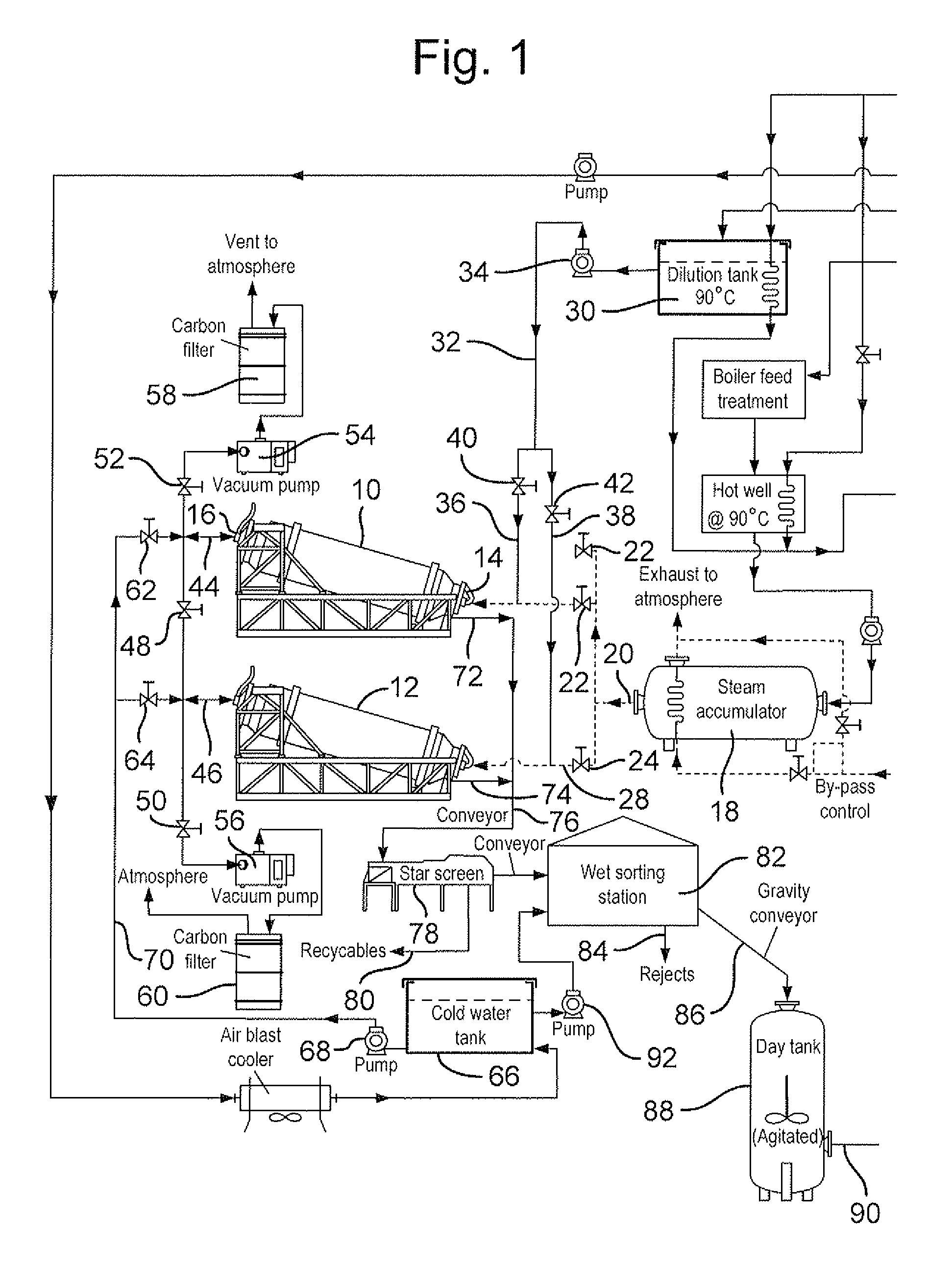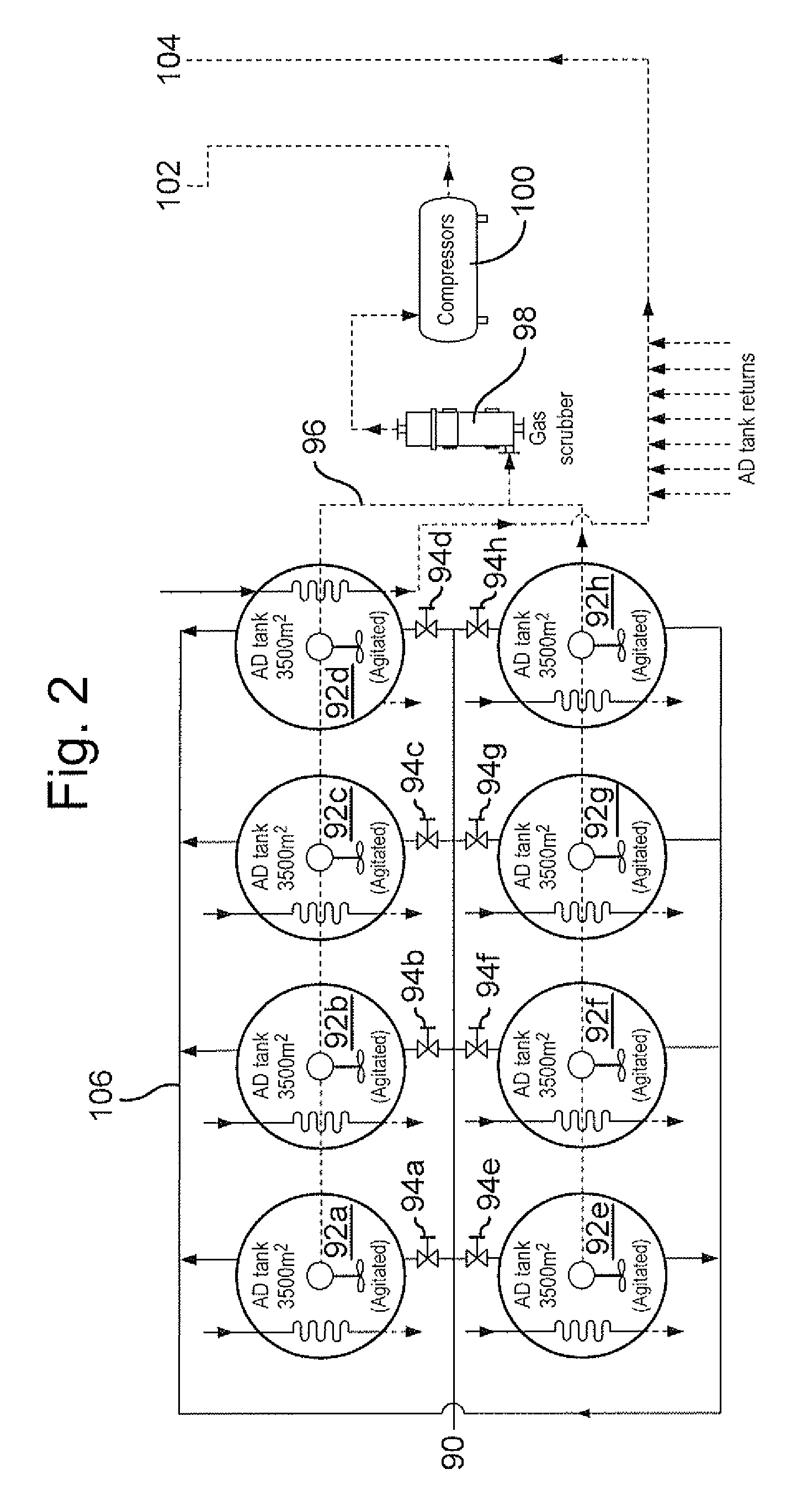Apparatus and process for treating waste
a technology of apparatus and waste, applied in the direction of biochemistry apparatus, solid separation, lavatory sanitory, etc., can solve the problem that lignin is not heated enough to be crystallized, and achieve the effect of easy separation
- Summary
- Abstract
- Description
- Claims
- Application Information
AI Technical Summary
Benefits of technology
Problems solved by technology
Method used
Image
Examples
Embodiment Construction
Effects of Autoclaving MSW
[0048]There is a benefit in putting MSW through an autoclave, as the resulting material of high organic fraction and high water content can be subjected to anaerobic digestion which breaks down organic matter to produce methane gas, which can be used to drive a generator to produce ‘green’ electricity. Because the electricity is produced from a renewable source, in UK it currently attracts extra allowances under the Renewable Obligation Credits (ROCs) scheme as of December '09, making it worth around 15 p per kWhr, and most of this electricity can be supplied to the National Grid. The process of generating electricity also generates waste heat, which is used to produce the steam for the autoclaves via waste heat recovery boilers. In addition, surplus heat can be used for other purposes. After removal of metals and plastics, cellulose floc can either be removed or as in the disclosed embodiment left in the mixture that goes into the anaerobic digester.
[0049]...
PUM
| Property | Measurement | Unit |
|---|---|---|
| angle | aaaaa | aaaaa |
| angle | aaaaa | aaaaa |
| pressure | aaaaa | aaaaa |
Abstract
Description
Claims
Application Information
 Login to View More
Login to View More - R&D
- Intellectual Property
- Life Sciences
- Materials
- Tech Scout
- Unparalleled Data Quality
- Higher Quality Content
- 60% Fewer Hallucinations
Browse by: Latest US Patents, China's latest patents, Technical Efficacy Thesaurus, Application Domain, Technology Topic, Popular Technical Reports.
© 2025 PatSnap. All rights reserved.Legal|Privacy policy|Modern Slavery Act Transparency Statement|Sitemap|About US| Contact US: help@patsnap.com



